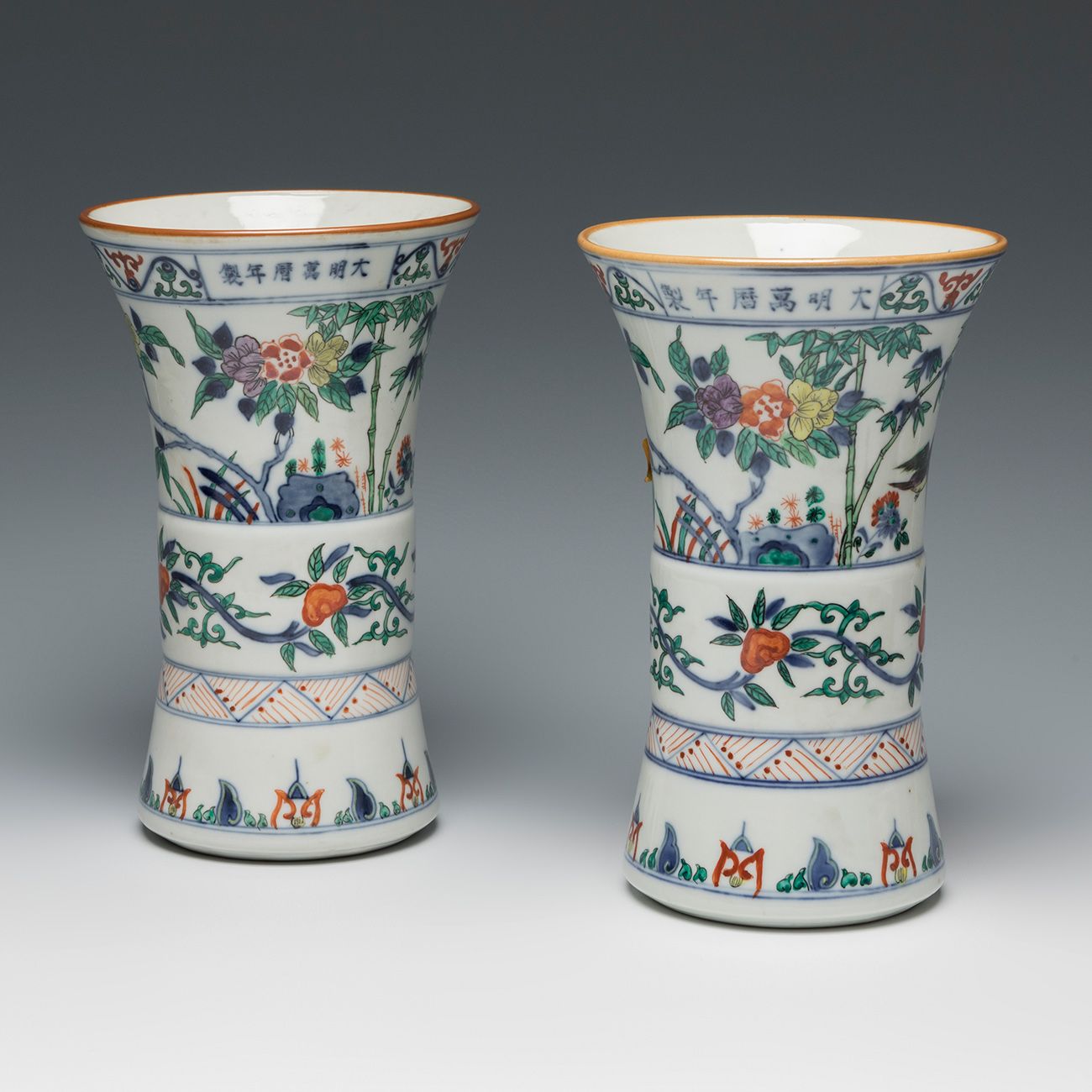Description
Pair of Chinese trumpet vases, "rose family". Qing dynasty, 19th century. Hand-painted porcelain. Measurements: 24 cm (height); 15 cm (largest diameter). Pair of Chinese trumpet vases, "rose family". Qing Dynasty, 19th century in hand-painted porcelain with vegetal decorations, borders and birds of various colours. "Pink family" is a type of Chinese porcelain introduced in the 18th century and defined by the presence of pink overglaze glaze. It is a Western classification for Qing dynasty porcelain known in Chinese by various terms: fencai, ruancai, yangcai and falangcai. The colour palette was introduced to China during the Kangxi reign (1654-1722) by Western Jesuits working in the palace, but perfected only in the Yongzheng era when the best pieces were made. Although "pink family" is named after its pink glaze, the colour can actually range from pale pink to deep ruby, and in addition to pink a range of other soft colour palettes are also used. The gradation of colours was produced by mixing coloured glazes with 'vitreous white', an opaque white glaze (lead arsenate), and its colour range was further extended by mixing different colours.
32
Pair of Chinese trumpet vases, "rose family". Qing dynasty, 19th century. Hand-painted porcelain. Measurements: 24 cm (height); 15 cm (largest diameter). Pair of Chinese trumpet vases, "rose family". Qing Dynasty, 19th century in hand-painted porcelain with vegetal decorations, borders and birds of various colours. "Pink family" is a type of Chinese porcelain introduced in the 18th century and defined by the presence of pink overglaze glaze. It is a Western classification for Qing dynasty porcelain known in Chinese by various terms: fencai, ruancai, yangcai and falangcai. The colour palette was introduced to China during the Kangxi reign (1654-1722) by Western Jesuits working in the palace, but perfected only in the Yongzheng era when the best pieces were made. Although "pink family" is named after its pink glaze, the colour can actually range from pale pink to deep ruby, and in addition to pink a range of other soft colour palettes are also used. The gradation of colours was produced by mixing coloured glazes with 'vitreous white', an opaque white glaze (lead arsenate), and its colour range was further extended by mixing different colours.
